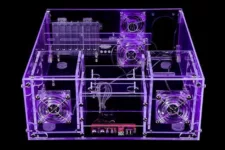We all have come to believe that faster processors, more RAM, larger hard drives and more bells and whistles are better when it comes to buying computers. But if you are truly honest with yourself, ask yourself the right questions and resist the urge to always buy whatever the salesman says you could end up saving yourself or your company a lot of money.
The trouble is, most people don’t really know what they want or how much machine they really need.
Let’s say you’re shopping for new equipment for your employees. If you ask them what they need (or want) you’re likely to get a wide range of answers. The sales people all want 15” MacBook Pros with Retina displays which cost about $2,500. But then they’ll say they want the fastest processor, extra RAM, extra storage and one of those fancy 27” Thunderbolt display monitors for when they are at their desks. Throw in Apple’s Protection Plan and suddenly you’re up to $4,626 per system.
Now if you ask those same sales people what exactly they do with their laptops day after day it will probably turn out that all they really need to do is track their contacts, surf the web, check their emails, give PowerPoint presentations, write the occasional business letter and perhaps use some sort of CRM sales package. (They might not want to admit it but they also want to be able to check their social media accounts, stream videos and music and play Angry Birds.)
None of these things require a $4,626 laptop. In fact, apart from running a specific piece of sales software you could do all these things with a $200 ChromeBook or even a $150 Kindle Fire (heck, you could do all these things with a $50 off-brand tablet). And you don’t need the latest and greatest, name-brand model fresh from the factory, you could accomplish the same things with a slightly older refurbished laptop or an off-brand model (and at discount prices you could probably outfit two people with last year’s laptops for the price of one newer device). The only sticking point is the CRM software since some older packages require downloading the entire database every time you sync your laptop with the corporate server and that may require more RAM and storage. (BTW, SalesForce is web-based so all you need is an Internet connection.)
Just about all laptops and tablets over the past few years have come with built-in wi-fi that will connect to any Internet hot-spot or office wi-fi router. If your people say they need Bluetooth, detachable keyboards or touch screens or the ability to use the device like a cellphone just say no. Detachable keyboards and touchscreens may be cool but they aren’t really necessary. Bluetooth is only useful if you want to connect to wireless headphones or speakers. If they want to make phone calls with the device get them a Skype account.
The rest of the people in your office may have visions of having a fancy new full-blown HP EliteDesk 800 G1 Ultra Slim Desktop PC under their desk, but those will cost you $2,800 or more. If they want an iMac expect to shell out a minimum of $2,000 a piece (a fully-blown iMac with a 27” Retina display will cost nearly $7,000!).
Again, if you analyze what types of tasks your typical office workers perform on a daily basis you’ll discover that they don’t really need a super-fast computer with massive amounts of RAM, high-octane graphics card, tons of hard disk storage and a fancy Retina display.
In fact, you can get a brand new Dell desktop machine with 2.41GHz processor, 4GB RAM, 500GB hard drive, Ethernet, CD/DVD player/burner, keyboard, mouse and Windows 8.1 all for less than $230. Throw in a cheap 19” LED monitor for under a $100 and maybe kick it up to 8GB RAM and you’re done. Or, as mentioned above, you could get a refurbished computer with virtually the same specifications for under $150. (Note: LED monitors will start to burn out every 3 to 5 years and they aren’t really worth repairing, so you might as well buy less expensive ones to begin with.)
So when would you need to spend a bit more on a computer? Again, it depends on what you need to do with it.
People in your accounting department who need to manipulate large spreadsheets every day and keep track of lots of accounts would benefit from a faster processor and more RAM for crunching those numbers. A larger monitor is also helpful for displaying all those numbers. Since the odds are everyone in your office will be connected to a network a large amount of hard disk storage isn’t really necessary.
If any of your people do a lot of graphics work then they too will need a more powerful machine and a higher-quality monitor. Here is one area where you might consider boosting the hard disk capacity. Graphics designers tend to make many changes to their images and it might be better to have them save all those incremental iterations locally rather than store 20 versions of the same graphic on the network servers. Save the final versions to the server and have them clean out the old versions when they need to free up space.
If your company is involved with creating and rendering 3D content, computer animation, video editing, high-end audio, building games or using CAD then you’re going to have to think about buying workstations.
We’ll talk about what exactly separates a workstation from a regular desktop in another article but we will say that workstations are the Ferraris of the computer world – very high-end, very specialized and, not surprisingly, very expensive. If you really need workstations there are lots of options but be prepared to shell out a fair amount of money.
If some of your people are involved with desktop publishing then you are kind of screwed. 99% of desktop publishing folks use Macs exclusively and you’re going to have to get the fastest processor you can afford and pack as much RAM and storage into it as possible or you can expect to see your graphics people wandering the halls while they wait for their machine to re-paginate a brochure. You might also have to spring for one of Apple’s higher-end monitors too. It’s worth checking out Apple Certified Refurbished gear if you absolutely must buy a Mac. They offer a good warrantee, good customer services and a good return/replacement policy. Plus, if anyone knows how to refurbish a Mac properly it would be Apple.
Finally there are servers. At the most simplistic level you could say that servers are little more than desktop computers dedicated to running specialized server applications that handle things like running networks or web sites or processing e-mails. There are so many things to consider when buying servers that they deserve a separate article (or three) all by themselves. Rest assured we will be talking about buying server equipment in other articles. For now we’ll just say unless you know what you are doing you should definitely call in the experts to help you decide what you do- and don’t need.
There are other specialized tasks that some people might need to perform that would require special equipment but 99% of the time if the machine can run the software packages that your people use every day you’re good to go.
In most of the cases listed here you can save yourself a lot of money by buying refurbished, reconditioned or off-brand products since they give you the most bang for fewer bucks. Check out our partner’s website The Other Guys, they sell tons of refurbished, reconditioned and off-brand gear at very low prices.
So the bottom line is: save yourself some money and only buy as much as you really need.








